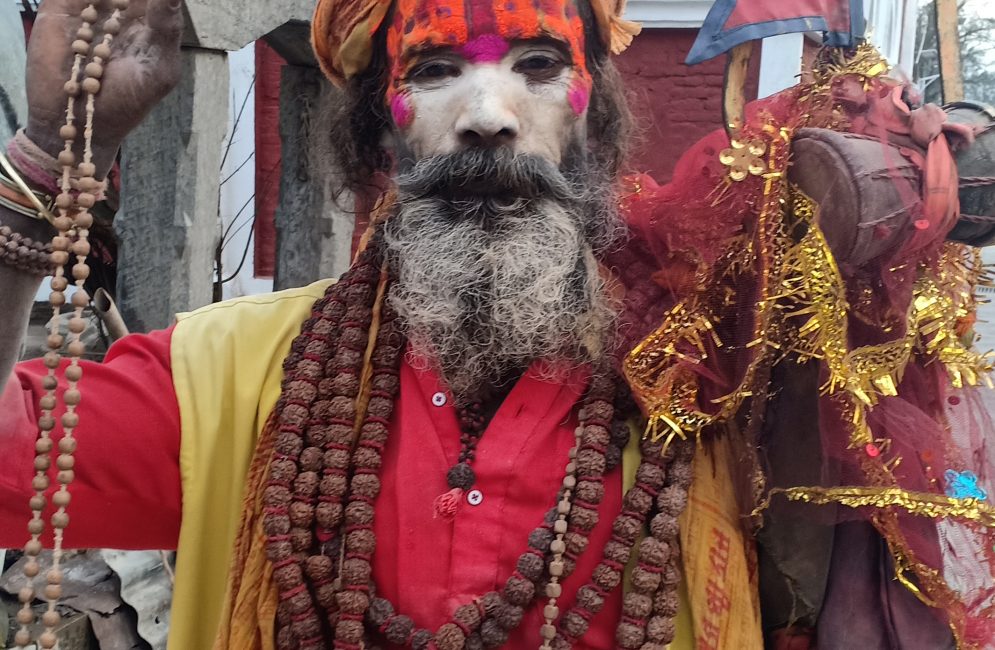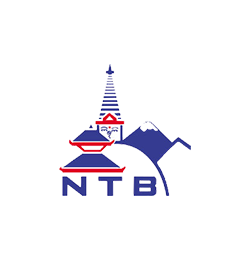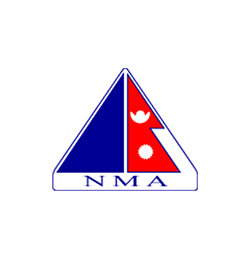
Nepal Pilgrimage destinations
Nepal Pilgrimage destinations probably the one and only Himalayan country as well in the whole world, where both Hindu and Buddhism follower can visit great holy pilgrimage sites and various destination around Nepal.
Nepal Pilgrimage destinations vary from main cities of Kathmandu, Patan, Bhaktapur and beyond to remote areas from low warm of Terai belt to high alpine hills to mountainous areas.
Nepal offers wide destinations for all Hindu and Buddhist religions to reach and visit sacred and holy sites exists around the country from driving to long walking distance or short air journey by plane and helicopter ride.
Most Nepal pilgrimage destinations for Hindu and Buddhism followers starts right from the capital Kathmandu offers exciting and interesting holy sites within the center of the city and further beyond.
Kathmandu although a semi-modern metropolitan city but retains its old age glory of historical to religious importance monuments from temples to monasteries and Stupas or Chaitya.
Main Hindus Nepal Pilgrimage destinations
Pashupatinath Temple
Kathmandu provides countless of pilgrimage sites where the main important for Hindu is holy Pashupatinath Temple, dedicated to Lord Shiva where thousands of pilgrims from all parts of India, Nepal and other countries visits each season of the year.

The main pilgrimage takes place in the month of February on Shiva Ratri an anniversary celebration of Lord Shiva, around Pashupatinath with few more important places like Gujeswoari a temple dedicated to Lord Shiva consort goddess Parvati.
Budhanilkantha
Situated north of Kathmandu valley beneath a high green hill of Shivapuri, an interesting Hindu temple dedicated to Lord Vishnu or Narayan, where the local areas also known as Narayanthan.

Observe the statue on a bed of serpents amidst religious pool which seems to float on water, surrounding pond actually represents the sea. The reclining statue was built in the 5th century A.D. The season of religious celebration here takes place right after the festival of Tihar.
Although a renowned spot of worship, the reigning past king of Nepal (a contemporary or any Hindu monarch) not allowed visit for reasons particularly unknown. To please past king a replica been built at water garden at Balaju.
Dakshinkali
Dakshinkali Temple situated south of Kathmandu. The holy spot holds an important pilgrimage, drawing over 400,000 pilgrims a year to worship and prayer with animal sacrifices to Goddess Kali.
Changunarayan Temple
An hour drive from Kathmandu to Changunarayan Temple and its village, another famous and oldest temple of Nepal offers a panorama of mountains with views of Kathmandu valley.
Changunarayan temple and its village located in a peaceful surrounding with old traditional Newar houses, after a drive short walk upon steps to Changunarayan Temple premises.
The temple compound surrounded with marvelous work of arts and on its magnificent pagoda style Changunarayan Temple, one of the oldest monument in Nepal.
This temple listed in World Heritage Site, a fifth-century history stands on a hilltop 15 km. east of Bhaktapur the temple adorned with full of artistic works on metal and wood.
An inscription dating back to 464 AD found here is the first epigraphic evidence of Nepalese history.
Janakpur city and the old kingdom of Ramayana era
Located Nepal Mid South at Janakpur where you can witness ancient Janakpur historical and religious sites of Janaki Mandir, home of Sita consort of Lord Rama Nepal Mid South at Janakpur where you can witness ancient Janakpur historical and religious sites of Janaki Mandir, home of Sita consort of Lord Rama.
Main Buddhist Nepal Pilgrimage destinations
Swayambhunath Stupa (Monkey Temple)
One of the main hubs of Buddhist followers within Kathmandu city, Syambhunath Stupa of more than 25 centuries old, stands as one of the world’s oldest Buddhist Chaitya.

The Great Stupa of Swayambhunath one of the important landmark and a great wonder and glory of Nepal, listed a World Heritage for Site and it serves as the nerve center of faithful worship for all the devout philosophy of Vajrayana in particular that honors Lord Adi Buddha.
It is dedicated to the self – originating flame God. The stupa, which forms the salient structure, is well composed of a solid hemisphere of terra – cotta bricks and soil supporting a cornice of copper and gilt.
Painted on four sides based with spiral and all-seeing eyes of Lord Buddha, keeping an eternal watch on the Valley distinguishing between vice and virtue.

The whole hill is a mosaic of small Chaitya and pagoda temples possessing great five Mahayana (Lamaism) and one Hinyan (Therbedist). On the hind hill is located another important Buddhist shrine; called Manjushree God of Knowledge.
Bouddhanath Stupa
This large Stupa, stand as largest Buddhist shrine of South Asia, the ancient colossal Chorten built in 6th century A.D. by King Man Deb.

It rests on a series of three terraces looking from bird’s eye view it’s a relevant shape of a lotus flower which remains a very holy object for all world-wide Buddhists devout.
The Stupa is known as Chorten / Stupa surrounded by a circular market with four pairs of Buddha’s eyes giving a stunning flash around four cardinal directions, as a diligent watch over the people and their commitments.
The Stupa embraces authentic philosophy of Mahayana faith of Buddhism which is known as Lamaism in Nepal, Sikkim, Ladakh, Bhutan, and Tibet.
Namo-Buddha
Located a mere driving distance of few hours to Dhulikhel town and to Namo-Buddha, an important religious sacred and holy sites for Buddhism and all alike.
Where history mentions as supreme sacred sites known as the ‘Three Stupas in Nepal’ and the holy site where future Buddha sacrificed his body to a tigress.
A very sacred place where supreme Buddha-at that time still on the path of learning-offered his own body without regret to a tigress suffering from great hunger, what follows rest is a history of the supreme and the place as a distinguished sacred site.
Pharping
Pharping, located south of Kathmandu valley rim of a short drive to visit Pharping renowned as holy Buddhist place, where Guru Padmasambhava from Nalanda / Patna a city in India (Guru Rinpoche) meditated in the cave of Pharping before taking his journey and mission to Tibet in early 7th century.
Lumbini
Lumbini located Nepal Far South West where Lord Buddha’s birth sites located with other major monuments and monasteries.

Lumbini the main hub for all Buddhist religion and followers where thousands of pilgrims all over the world visit Buddha’s birthplace Siddhartha Gautama Buddha born in 6th Century B.C., also known as Sakyamuni, according to Buddhist tradition, Maya-Devi gave birth to Buddha on her way to her parent’s home in Devadaha in the month of May in the year 642 BC.
The site was rediscovered in 1895by German archaeologist came upon Asoka’s Pillar, identified by its inscription. Records made by the Chinese pilgrim Fa Xian were also used in the process of identifying this religiously acclaimed site. Lumbini was designated a UNESCO World Heritage Site in 1997.
High Mountain areas for pilgrimage for both Hindu and Buddhism religions
Muktinath Temple
Muktinath holy temple at the height of 3,750 meters, located within Mustang district, this holy place flooded with pilgrims of both Hindu and Buddhist, a nice walk to the Temple of Muktinath and with its 108 water spout, which is also the source of Kaligandaki river.
Muktinath means Liberation or liberates from oneself, pilgrims visits to offer prayer and to free from the sin of a lifetime.
Muktinath can be reached taking a short flight to Jomsom from scenic Pokhara city and drive or walk to holy Muktinath Temple.
Damodar-Kund
Damodar-Kund situated on the laps of Damodar and Mustang Himalaya range of mountains, at the height of 5,400 m high.
The main glacial source of great Kaligandaki River Damodar-Kund (pond) believed manifestations of Lord Vishnu head and the Mouth at Muktinath, Shaligram (ammonites / black fossils) as chest and the Ru Ru Kshetra of Palpa as the waist.
Lord Krishna has described on the second column of Barah Puran visit of Damodar-Kund with a bath washes the sins of a hundred lifetimes.
Here one can offer prayer and worship taking a holy dip in the holy pond of Damodar-Kund and return to Jomsom for a regular flight back to picturesque Pokhara after great spiritual time at Damodar Kund.
For Damodar-Kund Pilgrimage one can walk for a week to reach the holy pond or take an easy ride in the comfort of Helicopter service either from Pokhara or Jomsom.
Holy Gosainkund Pilgrimage
To reach Holy spot of Gosainkund either drive from Kathmandu to Dhunche at 1,950 m high around Rasuwa district north of the capital Kathmandu with the shadow of Langtang Himal.
From Dhunche walk for few days on steep uphill into the enchanting cool alpine forest to reach at Sing-Gompa / Chandanbari 3,254 m high, and continue to walk up to Gosainkund Lake at the height of 4,381 m.
A famous Nepal pilgrimage destinations spot located on the mountainous area of Langtang and Central Himalaya, this holy spot visited every season of the year for worship and to take a dip in the icy holy pond.
Once a year in the month of August as per Hindu calendar in full moon time an even ‘Janai Purnima’ great Hindu religious events take place.
Where thousands of pilgrim’s visits here for a holy bathe and dip and worship lord Shiva, who created the pond around Gosainkund area.
At one-time evil one spread the poison on earth, where Lord with his mighty weapon a trident strike the soil and water sprung-out which he needed to quench and dilute the poison that he drank to save the world.
Holy Gosainkund can be reached in the comfort of a Helicopter ride to and from Kathmandu also to save time and energy.
Halesi Mahadev Pilgrimage
Halesi Mahadev Pilgrimage takes about two days to reach far eastern Nepal just south of Mt. Everest, a great journey to Halesi Mahadev Pilgrimage around the high hill with beautiful natural landscapes of high rolling green hills to reach Holy spot of Halesi.
Halesi Mahadev, pilgrims can visit and observe interesting Cave of Lord Shiva’s and footprints where part of a monster traces are seen that Shiva fought and
killed which is located in the inner ceiling of the deep cave.
The place adorned with magnificent Shiva Linga a Phallus formed by an age-old stalagmite.
A great journey within remote Eastern Nepal where history of the place of Halesi Mahadev, equally important to Buddhist followers as well, where Padmasambhava a renown Holy Guru founder of Tibetan Buddhism, known as great Rinpoche and his wife Mandarava freed themselves from cycle of life and became immortal in this sacred cave which was received by Vidyadhara (an ancient Sanskrit word) of longevity.
This exclusive Halesi Mahadev Pilgrims Tour of 2 days will surely enlighten you with spiritual value after a memorable pilgrimage.
To reach Halesi Mahadev one can take the easy comfort of a Helicopter ride or drive to nearest road-head and walk to the holy spot of Halesi Mahadev.






